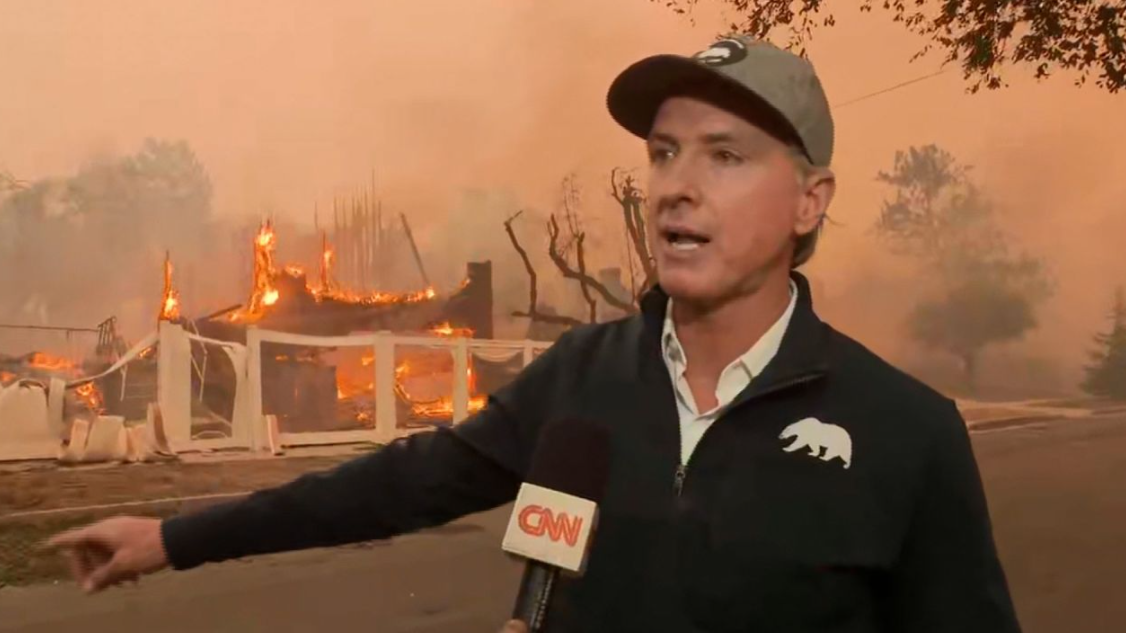Thursday, July 03, 2025
Thursday, July 03, 2025

by JX Tan:
As California Governor Gavin Newsom recently made a controversial comment to “reimagine LA 2.0” amidst smoldering neighborhoods, it’s hard not to feel a sense of déjà vu—and recall the Deepwater Horizon oil spill from 2014 when Tony Hayward, BP CEO, called the amount of oil and dispersant “relatively tiny” in comparison with the “very big ocean.”
Both responses demonstrate how tone-deaf responses can complicate an already dire situation. It’s a reminder that crisis communication is not just about managing public perception; it’s about aligning actions and messaging with the severity of the crisis to build trust and focus on the next steps to mitigate a crisis.
In this unfolding drama, the wrong move—or words—can spark a tidal wave against even the most powerful leaders. Using Gini Dietrich’s six-step framework, we analyze Newsom’s approach and highlight key lessons for crisis communicators.
1. Brainstorm Every Possible Scenario
The best way to shape any public narrative is to match words with deeds and an important first step is comprehensive scenario planning. After all, if you don’t start with potential scenarios, how can you map out the next steps and communicate information to key stakeholders?
Despite the National Weather Service (NWS) LA Twitter account having warned since Jan 3 about potential fire weather risk, the California Governor’s Office of Emergency Services (OES) only posted fire-related information on Jan 7. With 15 of the 20 most destructive wildfires in the state’s history occurring within the past decade, the OES and Newsom himself could have been more proactive to amplify these warnings.


Simultaneously dealing with two of the biggest-ever Californian wildfires at the Palisades and Eaton with over 13,000 structures affected was also an outlier event that the Governor’s team might not have covered in their scenario planning.
2. Decide if It’s an Issue or a Crisis & 3. Determine the Risk Level
The impact of five simultaneous fires was staggering, so step two was relatively straightforward. Very quickly, the Governor’s team accorded the highest priority to this wildfire and Newsom declared a state of emergency on Jan 7.
As part of determining risk levels, crisis communicators need to ‘read the room’ and prioritize immediate versus medium-term priorities based on social media monitoring. We can see public focus rapidly shifted to the progress of fire containment efforts, the needs of affected communities, and the areas that might be affected by these fires.
Sticking to these immediate priorities is a wise strategy but unfortunately, Newsom might have differing political priorities, potentially undermining his credibility. On 12 January, in an NBC interview, Newsom mentioned he was ‘reimagining LA 2.0’ post-wildfire, and that California needs a ‘Marshall Plan’ to rebuild. This immediately prompted outrage among some on social media, with several writing that “@GavinNewsom sees the fires as an opportunity to accelerate his ‘Marshall Plan.'” He also blasted Trump’s comments about water management and wildfire prevention as a ‘dissemination of misinformation.’
While addressing a rebuild is important, the immediate disaster warranted a more focused response especially as LA was still burning. Newsom could also have stuck to inviting Trump to visit Los Angeles County to witness the wildfire devastation firsthand, emphasizing the importance of collaboration over conflict without additional comments.
4. Is It Preventable?
While wildfires are natural disasters, clear, empathetic, and actionable messaging before and during the crisis could have built public trust and reduced criticism.
As mentioned earlier, pre-emptive messaging by the Governor’s team has much room for improvement. But his team proactively communicated during this crisis, providing information on the launch of two Disaster Recovery Centers in LA to provide a one-stop-shop of state, federal and local resources to affected communities in English and Spanish as well as updates on ongoing fire-fighting efforts and wind conditions.

5. What Will Escalate It?
The current wildfire situation looks like a long-drawn fire-fighting effort possibly stretching weeks or months. Any additional major loss of property and lives is likely to escalate the ongoing crisis and invite additional criticism. With such high stakes, Newsom should reduce talk about the ‘hurricane of misinformation’ and the risk of appearing even more defensive and self-serving.
6. Who Are Your Audiences?
Crisis communication must address distinct audiences with tailored messaging. For Newsom, these audiences included:
At the beginning of this crisis, Newsom’s broad statements invited criticism and skepticism. Tailored communications that emphasized immediate and tangible actions—such as community support—could have strengthened public trust and demonstrated leadership.
Lessons for Crisis Communicators
An analysis of Newsom’s wildfire communications underscores the importance of aligning crisis communication strategies with the immediate severity of the situation. For crisis communicators, the key lesson is clear: make comprehensive plans before a crisis, prioritize urgent needs, and let tangible actions speak louder than rhetoric.
Looking to safeguard your brand in turbulent times?
At Momentum AI Communications, we combine crisis management experience at Singapore and China-listed companies with tested strategies to help you anticipate, navigate, and recover from crises. Our team works closely with you to build a communication framework tailored to your unique challenges. Reach out to prepare, protect, and empower your brand. https://momentumai.co/
+++
JX Tan is a Singapore-based crisis communication expert. He is a #WeLeadComms honoree.
Written by: Editor
© 2025 Stratpair Ltd., trading as Strategic. Registered in Ireland: 747736